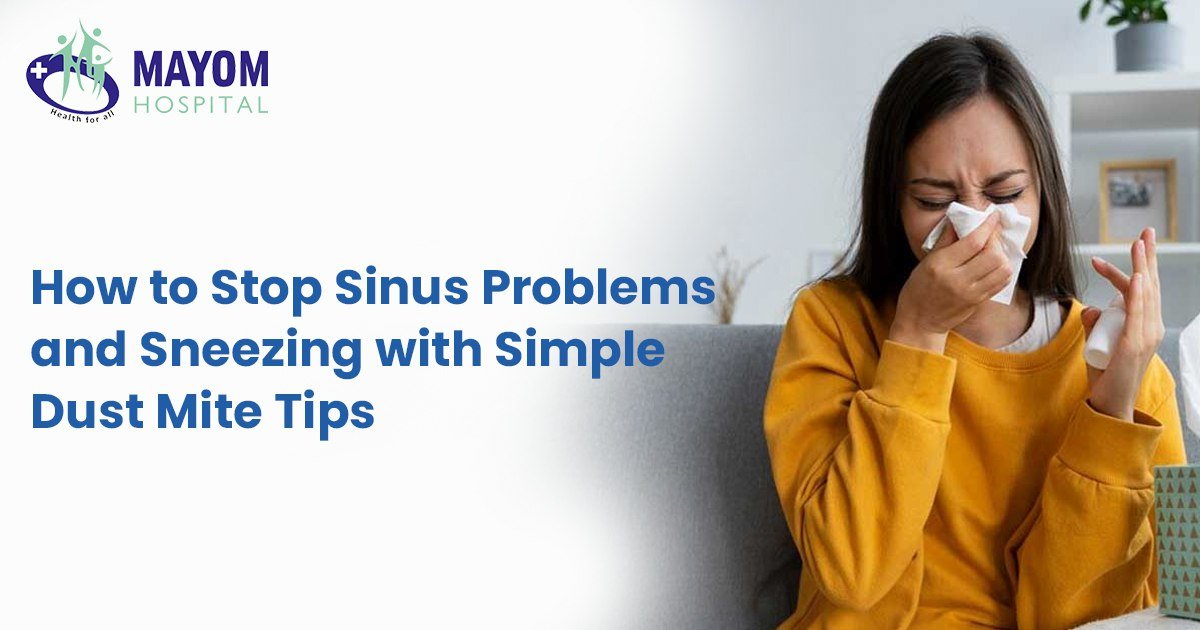Sinus problems and constant sneezing can be more than just an everyday irritation—they can impact your quality of life, productivity, and even sleep. One of the most common hidden triggers behind these issues is dust mites. These microscopic organisms thrive in warm, humid environments and are often found in bedding, carpets, and upholstery. For people prone to sinus infections, allergies, or breathing difficulties, dust mites can be a major culprit.
Fortunately, there are simple steps you can take to reduce dust mite exposure and prevent sinus flare-ups. And if symptoms persist, advanced medical options like sinus surgery in Haryana or consulting a snoring clinic in Gurgaon can provide lasting relief.
Why Dust Mites Trigger Sinus Problems
Dust mites feed on dead skin cells and thrive in household dust. The proteins in their waste products can trigger allergic reactions, leading to symptoms like:
- Frequent sneezing
- Nasal congestion
- Itchy or watery eyes
- Postnasal drip
- Sinus headaches
Over time, repeated exposure can worsen sinus inflammation, making it harder to breathe comfortably. In severe cases, patients may develop chronic sinusitis that requires medical attention at a reputed hospital like Mayom Hospital, which is widely recognized among the best hospitals in Gurgaon for ENT and respiratory care.
Simple Dust Mite Tips to Control Sneezing and Sinus Issues
1. Keep Bedding Allergen-Free
Since dust mites thrive in mattresses and pillows, wash bed sheets and pillowcases weekly in hot water. Use hypoallergenic covers for pillows and mattresses to block dust mites from settling inside.
2. Control Humidity Levels
Dust mites multiply quickly in humid environments. Use a dehumidifier or air conditioner to keep indoor humidity below 50%. This creates an unfavourable environment for their growth.
3. Vacuum and Dust Regularly
Use a vacuum cleaner with a HEPA filter to trap dust mites and allergens effectively. Dusting with a damp cloth also helps prevent allergens from circulating in the air.
4. Replace Carpets and Heavy Curtains
Switch to hardwood flooring and washable blinds instead of carpets and curtains, which trap dust. For existing carpets, steam-cleaning every few months can help reduce allergen buildup.
5. Maintain Good Air Quality
An air purifier with a HEPA filter can reduce airborne allergens, making breathing easier for those prone to sinus infections and allergies.
When to Seek Medical Help
While lifestyle changes can significantly reduce dust mite exposure, some people may continue to experience chronic sinus problems or disturbed sleep due to snoring and congestion. In such cases, it’s best to seek professional help.
For advanced care, Mayom Hospital, one of the best hospitals in Gurgaon, provides comprehensive treatment for sinus issues, including medical therapy and sinus surgery in Haryana for severe cases. If snoring is a concern, visiting a snoring clinic in Gurgaon can help identify whether allergies, sinus blockages, or other factors are causing sleep disruptions.
Final Thoughts
Managing dust mites with these simple tips can go a long way in reducing sneezing, allergies, and sinus problems. However, if symptoms persist or worsen, consult experts at Mayom Hospital for specialized ENT care. Whether you require effective allergy management, evaluation at a snoring clinic, or advanced options like sinus surgery, Gurgaon offers some of the best medical facilities to help you breathe freely and live comfortably.
Also Read ENT hospital in Gurgaon
.svg)
